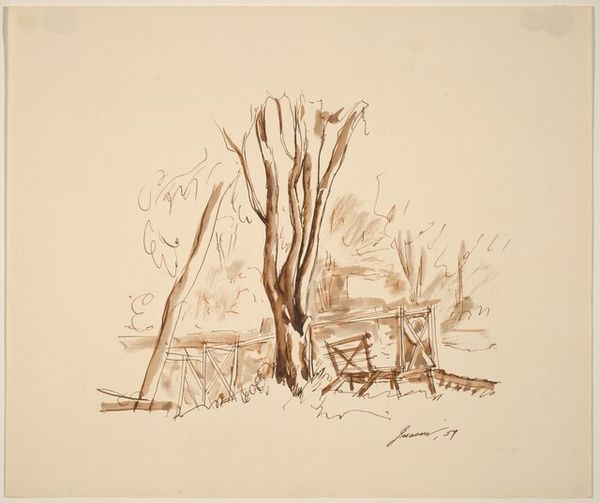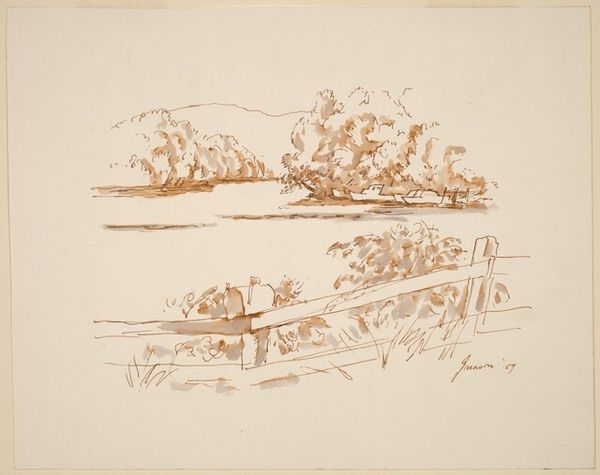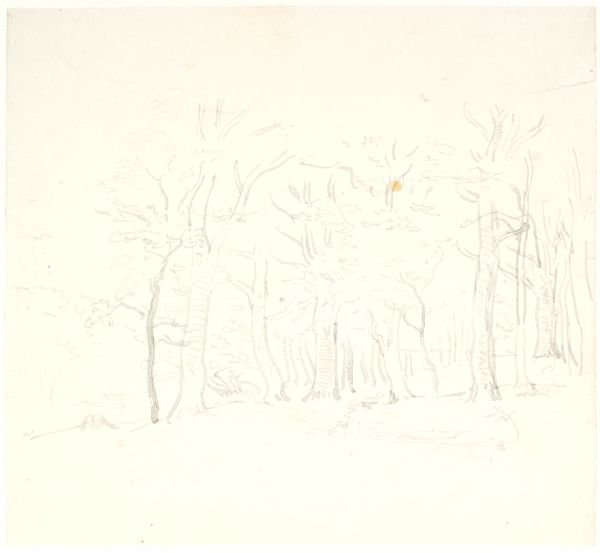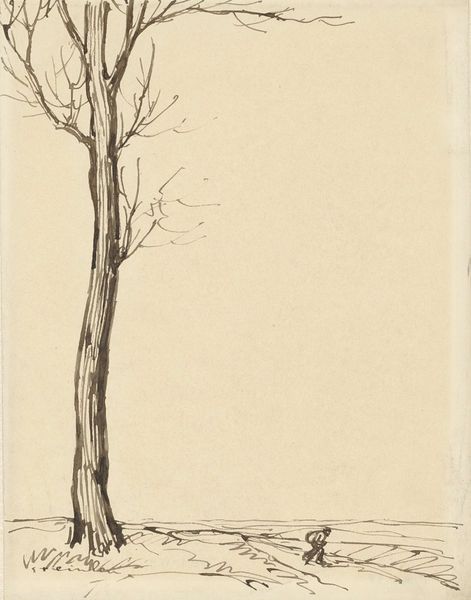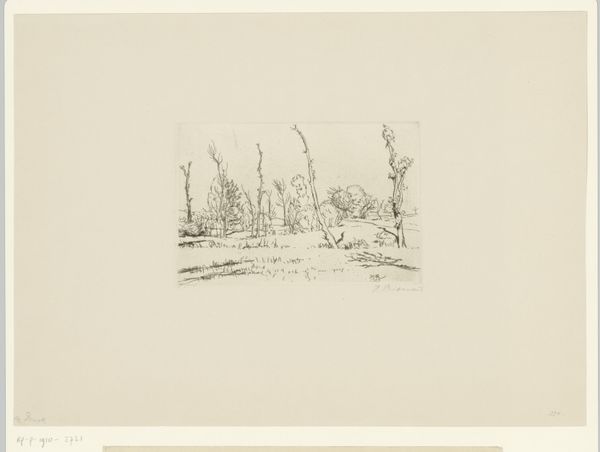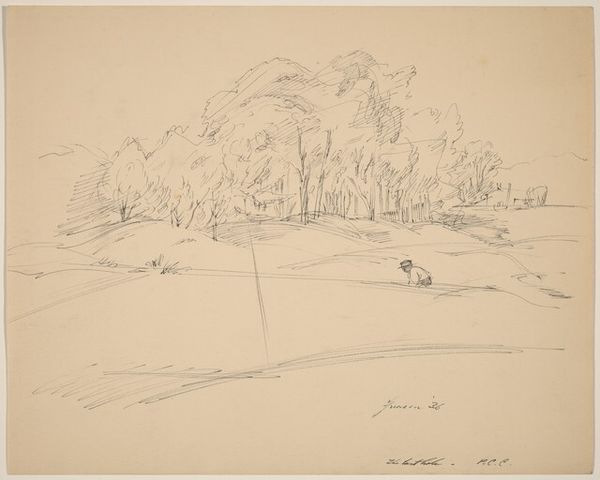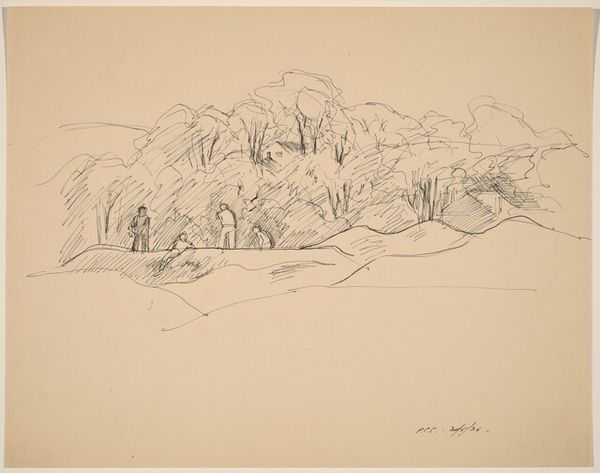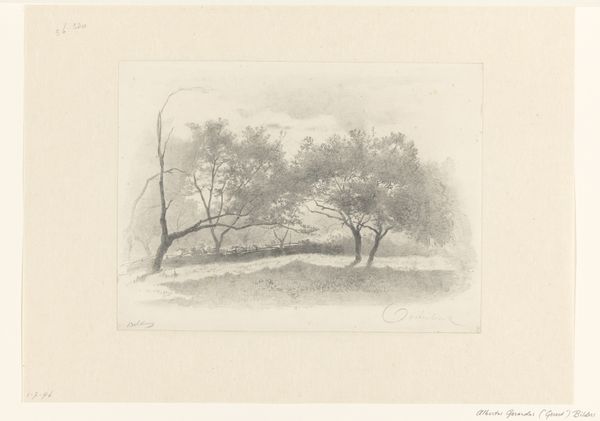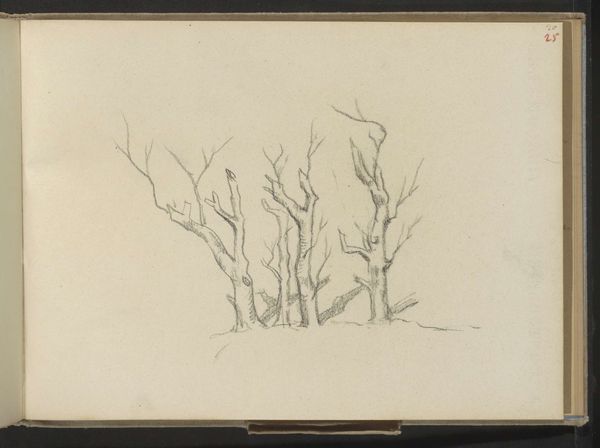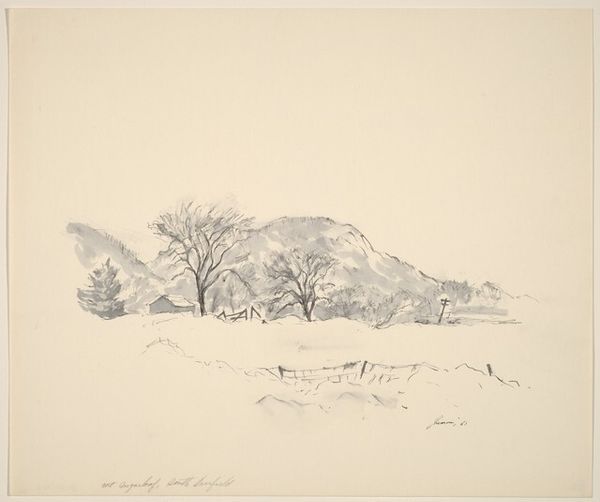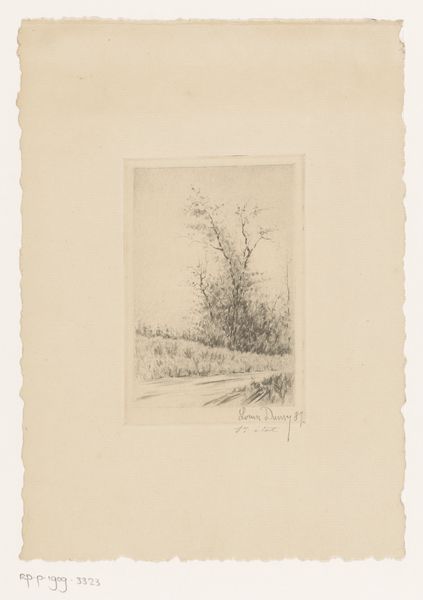
drawing, ink, pencil
#
drawing
#
organic
#
ink drawing
#
landscape
#
etching
#
organic drawing style
#
ink
#
pencil
#
realism
Dimensions: overall: 24.1 x 28.9 cm (9 1/2 x 11 3/8 in.)
Copyright: National Gallery of Art: CC0 1.0
Curator: This unassuming ink drawing, dated 1959, is titled "Trees, Picnic Table, Trash Can" by Donald Carlisle Greason. The composition strikes me as particularly straightforward; what is your first impression? Editor: Bleak. Beautiful, but utterly bleak. The almost skeletal trees, that forlorn picnic table… It speaks to the loneliness of forgotten spaces, rendered in strokes as delicate as a sigh. Curator: Interesting you use the word "forgotten". Given the title, I keep circling back to the trash can. It’s such an ordinary object, yet its inclusion feels almost… defiant? Greason’s choice to immortalize it within a scene meant to capture nature invites consideration on the mark we leave on nature's untouched spaces. Editor: I wonder about that 'touching'. The method itself—ink on paper—speaks of availability, of the everyday labor that results in making art from common experiences and sites. Was he sitting *there* as the piece was created, documenting with found materials? Or recollecting and reflecting? I imagine those specific choices changed not only the resulting imagery but their production’s circumstances too. Curator: It’s intriguing to ponder. I feel drawn to the ethereal quality of the trees; their spindly branches reach skyward like supplicating hands. There's a beautiful dance between fragility and resilience at play. Greason used sparse lines that give room for contemplation on the way these spaces shift from the past to a quickly approaching future. Editor: Agreed, I keep thinking about the physical labor itself – the artist’s hand, the repetitive motion, the sourcing of paper and ink, all essential to its existence as artifact. Art so frequently masks the labor and resources necessary for making. But ultimately that's part of the story here, of consumption and decay. It’s more about its simple ingredients and their capacity to conjure such potent emotions from an overlooked locale. Curator: I’m so glad you pointed to its physicality. These somber objects carry so much potential emotion with so few supplies, reflecting on overlooked places as material objects that once defined our experience within spaces. Editor: It almost makes you question, doesn’t it? Not just what he was thinking, but what’s the 'thingness' of observing and creating in the first place, especially when regarding commonplace sights, as well as what it means for us now? Curator: Beautifully put. Thank you for these thoughtful considerations on such a lovely composition.
Comments
No comments
Be the first to comment and join the conversation on the ultimate creative platform.
